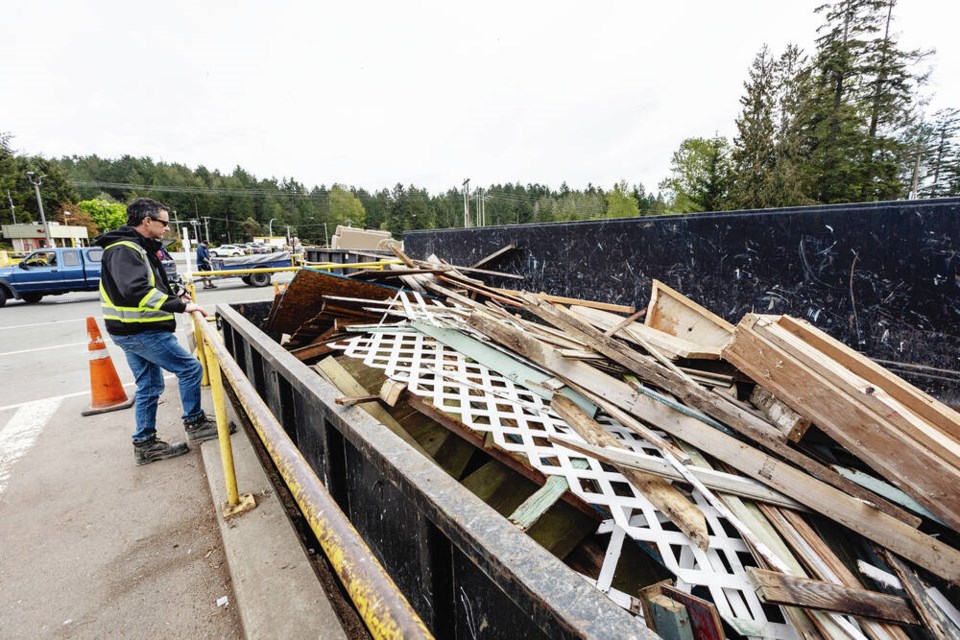The Capital Regional District board has been warned that doubling the fines for illegal dumping at Hartland Landfill could cause more problems than it solves.
A staff report prepared alongside GHD, a material diversion technical adviser, and presented to the board this week pointed out a 100 per cent increase in fines could lead to more illegal dumping, more public conflict with staff and increased administration costs.
The proposed increase in fines was among a series of amendments proposed in May for the Hartland Landfill Tipping Fee and Regulation Bylaw as a means of diverting more waste from the site starting next year.
Also included in the amendments were reduced fees for tipping wood, carpet and asphalt shingles, though those materials will now be diverted to be re-used, and increases in the fees to dump general waste to $150 per tonne from $110.
The staff report on the fines is meant to inform debate on the final bylaw this fall.
Currently, the fines, established in 2013, range from $50 for dumping recycled material to $200 for dumping unsorted demolition waste.
In May the CRD board was considering increases that would see fines range from $200 for recycling offences and $300 for unsorted demolition waste and up to $500 for disposal of non-district waste.
Some board members thought the fines would still be too low, and proposed doubling them to range from $400 to $1,000.
“Compliance from the public and industry can be achieved by providing an effective enforcement program,” the report concluded. “Strategies such as increased fine rates and providing incentives to pay fines early, along with education and awareness, can help the public and industry understand that non-compliant loads will result in consequences.”
The report did find there were some positive outcomes of increasing fines, including higher rates of mandatory source-separated materials, increased revenue to the CRD and reduced occurrence of repeat offenders.
The idea behind the increased fines and enforcement is to let the public know non-compliant dumping will be detected.
Last year, enforcement resulted in $100,000 in fines, most of them issued for improper disposal of recyclables and kitchen scraps.
The goal is to divert more waste from Hartland.
A Waste Composition Study, conducted by Tetra Tech Canada and released in June, found nearly half the waste going into the site is recyclable material that could have been diverted at the consumer level.
It found 47 per cent of the material received at Hartland could have been diverted at source through existing waste diversion or recycling programs.
The report was designed to help the CRD achieve targets it set out in its 2021 Solid Waste Management Plan, which established a target of 250 kilograms of waste a year per capita by 2031. That’s a one-third reduction of the current rate of 400 kilograms per capita a year going into the landfill.
The region hopes to extend the life of the site until at least 2049.
>>> To comment on this article, write a letter to the editor: [email protected]



